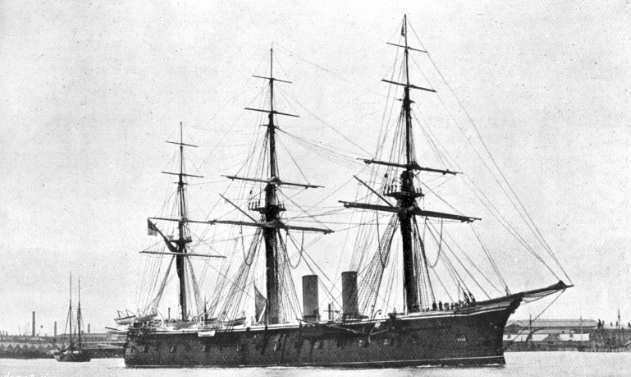In commission 1866–1889 Scrapped 2 | Built 1863–1867 Completed 2 | |
 | ||
Builders Chatham DockyardPembroke Dock | ||
The Lord Clyde-class ironclads were a pair of wooden-hulled armoured frigates built for the Royal Navy in the 1860s. They were designed by Sir Edward Reed and built to make use of the large stocks of seasoned timber available in the royal shipyards.
Overview
The design of these ships was based upon the design of HMS Bellerophon, but in making the adaptation from this ship's design to the requirements of a wooden hull, Reed had only the behaviour of HMS Royal Oak to learn from, and the tendency of her class to sag amidships had not at that time been recognised. Both ships were built with a beam equal to Royal Oak, and some twenty feet shorter.
Their hulls were a complex sandwich structure, consisting of an inner layer of oak ribs 24 inches (610 mm) thick, a 1.5-inch (38 mm) iron skin, 6 inches (152 mm) of oak support and backing for the armour, an armour layer of 4.5 to 5.5 inches (114–140 mm) in thickness, and a thin sheathing of anti-fouling Muntz metal. It was believed at the time that the 15-inch Dahlgren guns carried by the American monitors would fail to penetrate this sandwich.
